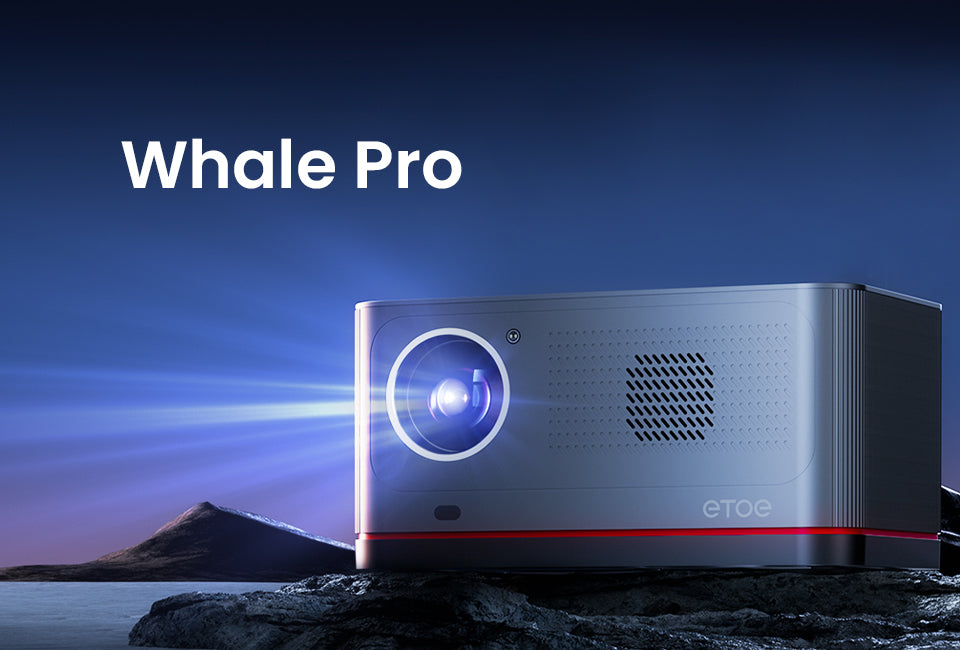Introducción: A la hora de elegir el proyector adecuado para tus necesidades, uno de los factores críticos a tener en cuenta es el brillo. Sin embargo, el mundo del brillo de los proyectores puede ser un poco complejo, ya que se utilizan varias unidades diferentes para medirlo. En esta publicación del blog, exploraremos estas distintas unidades y te ayudaremos a comprender mejor cómo seleccionar el proyector perfecto para tus requisitos específicos.
-
Lúmenes (lm): los lúmenes son quizás la unidad más común y más utilizada para medir el brillo de un proyector. Los lúmenes cuantifican la cantidad total de luz visible emitida por un proyector. En esencia, más lúmenes significan una imagen más brillante. Al elegir un proyector, tenga en cuenta el uso que le va a dar y la iluminación ambiental de la habitación. Para salas de cine en casa o salas de conferencias oscuras, los proyectores con menos lúmenes pueden ser suficientes. Sin embargo, en espacios bien iluminados, necesitará un proyector con más lúmenes para garantizar una imagen clara y vibrante.
-
Lúmenes ANSI: los lúmenes ANSI (Instituto Nacional Estadounidense de Estándares) representan un método estandarizado para medir el brillo de un proyector. Esta medición tiene en cuenta diversos factores, como la uniformidad de la distribución de la luz y el efecto de la luz ambiental. Los lúmenes ANSI proporcionan una indicación más precisa de cómo funcionará un proyector en condiciones reales, lo que los convierte en una métrica esencial para evaluar, especialmente en entornos comerciales y educativos.
-
Foot-Lambert (fL): Foot-Lambert mide el brillo de la imagen proyectada en relación con el tamaño de la pantalla. Tiene en cuenta tanto el tamaño de la pantalla como el brillo del proyector para determinar la iluminación ideal para una visualización cómoda. Si bien no es tan común como los lúmenes o los lúmenes ANSI, los foot-lambert pueden ser valiosos para garantizar el equilibrio correcto de brillo para un tamaño de pantalla y una distancia de visualización determinados.
-
Nits (cd/m²): Los nits, o candelas por metro cuadrado, son una unidad de medida que se utiliza para evaluar el brillo de las pantallas, incluidos los proyectores. Los nits son fundamentales para determinar la capacidad de un proyector para reproducir contenido de alto rango dinámico (HDR). Los proyectores con índices de nits más altos están mejor equipados para ofrecer imágenes vívidas y realistas con mejor contraste y detalle en contenido HDR.
-
Relación de contraste: si bien no es una unidad de brillo en sí, la relación de contraste es un factor vital para que un proyector pueda mostrar una imagen clara. Una relación de contraste más alta indica que el proyector puede distinguir entre áreas oscuras y claras de manera más efectiva. Esto contribuye a la claridad y nitidez de la imagen, especialmente en escenas con una amplia gama de niveles de brillo.
Conclusión: comprender las distintas unidades que se utilizan para medir el brillo del proyector es fundamental para seleccionar el proyector adecuado para sus necesidades específicas. Ya sea que priorice los lúmenes, los lúmenes ANSI, los pies-lamberts, los nits o la relación de contraste, es importante tener en cuenta el contexto en el que utilizará el proyector. Las distintas unidades brindan información diferente sobre el rendimiento de un proyector, lo que lo ayuda a tomar una decisión informada que garantice la mejor experiencia de visualización para su cine en casa, presentaciones comerciales o fines educativos.






Dejar un comentario
Este sitio está protegido por hCaptcha y se aplican la Política de privacidad de hCaptcha y los Términos del servicio.